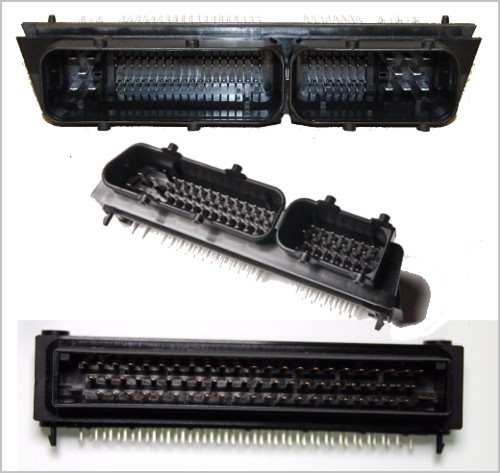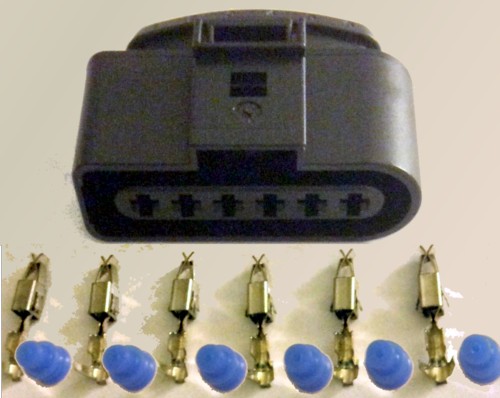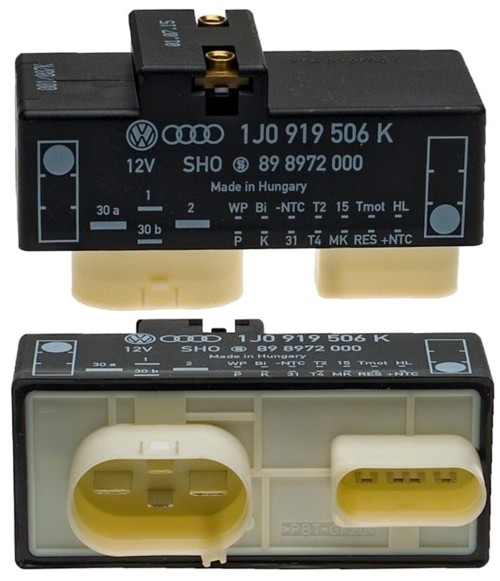Automotive Electronic Components
Admit it or not, we all love the new creature comforts of our modern day cars, all of which have become increasingly sophisticated. Those seat warmers in the cold of winter, the climate control in mid summer, the air suspension on those bumpy roads, the infotainment systems with integrated GPS so that we never get lost again; and the on-board video player for those times we had to patiently sit and wait in our cars for our loved ones. ECU controlled fuel injection put an end to idling the car in the morning to get it to the appropriate operating temperature. Power steering and assisted parking makes both driving and parking a breeze. ABS and traction controls ensures that your car stops and corners without incident.Not to mention cruise control, the increased horsepower, the additional safety features and the overall improved spatial comforts. And the list goes on. All of this was made possible by electronics, in the name of safety. Safety in the form of Safety Restraint Systems (SRS), Front and side airbags, early crash sensors and active front seat head restraints, to mention but a few.
On-Board Modules
Electronic engine management systems, carputer modules, telematic systems and other electrical components constitutes a sizeable percentage of our cars, collectively affording us the aforementioned comforts and conveniences. Besides, modern cars are loaded with code; and the number of electrical components in modern cars are on the rise, constantly and consistently increasing in number, and their failure can more often than not affect our driving safety. These electronic components can easily malfunction, either due to water ingress during wet weather conditions, or due to excessive vibration due to bad road surfaces, or just through general wear and tear. Most of these components are cheap and relatively easy to repair and replace but isolating the correct one can sometimes be trying. In a nutshell, modern day cars are seriously complicated, since they are not just computers on wheels but entire computer networks on wheels. Be that as it may, it is a well known fact that computers do crash, software have glitches and networks go off-line.How safe is safe?
But, the million dollar question remains; are these electronic devices really safe or are they as safe as the car manufactures would like us to believe they are. How safe is it when you're overtaking on a single lane highway at 100km per hour and the car goes into 'limp mode' or the engine just switches off and refuses to restart? How safe is it when the steering wheel airbag explodes directly into your face for absolutely no reason? Its air pressure wave that's louder than a gun, is bound to temporarily deafen you and the smoke enveloping you would certainly disorientate you. These factors can contribute to you loosing control of the car through no fault of your own or even loose your life.How safe is it when you suddenly and momentarily loose steering control at high speed or whilst driving in fast moving traffic when your car doesn't react to your steering direction? Or, how safe is it when your steering wheel suddenly goes stiff when turning (temporary loss of power steering)? How safe is it when your car randomly starts to jerk and switches off on a deserted road at night?
How safe is your VW really, considering certain Jetta, Golf and Audi A3 models are being recalled for fuel leaks that can cause potential engine fires. Case in point, German supplier Continental Automotive GmbH has been supplying fuel tank polymer flanges that crack to five OEM parts supply companies at least 11 auto makers, VW, Audi and Porsche included. What this means is that
there are millions of cars of all makes and models that may have leaking fuel issues as we speak.
Electrical sub systems
As mentioned above, modern cars, can have as many as 200 small embedded electronic control units, better known as (ECUs). Each module is in fact a fully fledged computer in its own right, overseeing one subsystem. Collectively they have several functions, ranging from controlling the engine and or transmission, to controlling the immobilizer, to controlling the air bags, to unlocking doors, to controlling the radio, to managing the ABS, to managing the cruise control and such like.Most of these computer modules have input switches and or input sensors that can detect variables such as temperature, air pressure, braking, steering angle, voltages. All these computers are connected to a centrally networked CAN bus that carries constantly varying data between them, in order to manage the car as it is being driven. The upside of this, is that the car can virtually drive itself but the downside is that when some essential module does go faulty, it would most likely shuts the car down which may also turn out to become an expensive repair.
 |
| Automakers are becoming more like assemblers and less like manufacturers |
Air mass sensors (MAF) - electronic
Camshaft Position sensors - electronic
Crankshaft Position sensors - electronic
EGR Valves - electronic
Knock sensors - electronic
Lambda (oxygen) sensors - electronic
Throttle position sensors - electronic
Wheel speed sensors - electronic
Ignition Coils - electronic
Glow Plugs - electronic
Coolant temperature sensors - electronic
ABS actuators - electronic
Injection valves - electronic
Solenoid valves - electronic
Anti-theft alarm - electronic ... and the list goes on.
Since Automobile production requires several thousands of parts, most of these parts are not manufactured by the car maker but are supplied by auto suppliers. Hence automakers are becoming more like assemblers and less like manufacturers because Auto Megasupplier's contributions have drastically increased from about 60% in the mid '90s to above 85% in 2017. Among these auto megasuppliers are companies like:-
Robert Bosch supplies (Gasoline and diesel systems, chassis system controls, electronics, exhaust gas turbochargers, steering systems, starter motors and alternators, etc),
Draexlmaier Group (wiring harnesses, interior systems, cockpit and door modules, etc.),
Royal Philips Electronics (Lighting, car radio integrated circuits, liquid crystal displays, etc.)
Infineon Technologies (Microcontrollers, intelligent sensors; power semiconductors, etc.)
Hella ( Electronic & lighting components, etc.)
DuPont Automotive (polymers, elastomers, specialty chemicals, lubricants, refrigerants, etc.)
SKF Automotive ( Bearings, seals, clutch assemblies, SKF Automotive drive-by-wire systems, etc.)
Valeo SA (transmissions, Micro hybrid systems, etc.)
Magneti Marelli (Lighting, powertrain transmissions, electronics, suspension systems, shock absorbers, exhaust systems, plastic parts, etc.)
Continental AG (Instrumentation, stability management systems, chassis systems, safety system electronics, telematics, powertrain electronics, interior modules, etc.)
Eberspaecher Holding GmbH (Silencers, catalytic converters, particulate filters, manifolds, vehicle heaters, electrical vehicle heaters, electronics, climate control systems, etc.)
CITIC Dicastal Co. (Aluminum alloy wheels, aluminum casting parts, etc.)
Mobis North America (Chassis, cockpit & front-end modules; ABS, ESC, MDPS, airbags, LED lamps, ASV parts, sensors, electronic control systems, hybrid car powertrains, parts & power control units, etc.)
That being said, there are so many of these components from auto suppliers that are troublesome. For example, batteries, starter solenoids, diodes and alternator voltage regulators and relays. Considering that the alternator is the heart of your vehicle's electrical system and that the electrical load has substantially increased due to the glut of extra electronics, I would think that some manufactures would at least have a second alternator for redundancy. Even perhaps a redundant network so that an alternative data path is available if the wiring harness goes faulty. Or even dual temperature sensors, or dual camshaft sensors, etc. It would do marvels for reliability.
Volkswagen is recalling some 766,000 cars globally for a software upgrade to their "anti-lock braking system".
Volkswagen is recalling 8.5 million diesel cars across the European Union due to the "emissions scandal".
Volkswagen is recalling some 90,000 gasoline powered VW Beetle, VW Golf, VW Jetta and VW Passat with 1.8T or 2.0T engines sold between 2015-2016, because the rear camshaft lobe has the tendancy to unexpectedly snap-off from the camshaft resulting in "loss of vacuum to the brake booster", implying inefficient braking and an increased risk of a crash.
Volkswagen recalls some 280,000 cars for fuel leaks.
Honda recently recalled 1.2 million from the 2013-2016 model Accords years, citing 'faulty battery sensors'.
Ford South Africa recalled 2.0-litre diesel-powered Kuga SUVs to resolve a potential "brake problem".



















